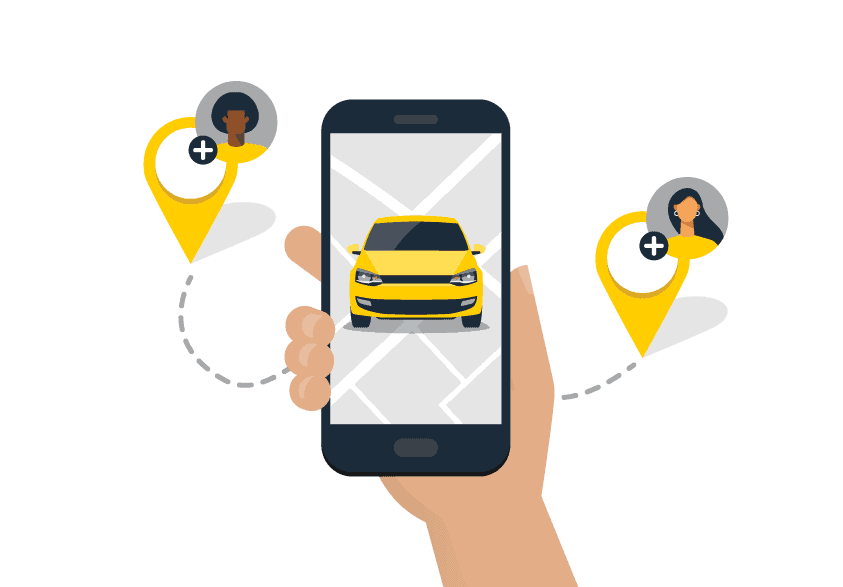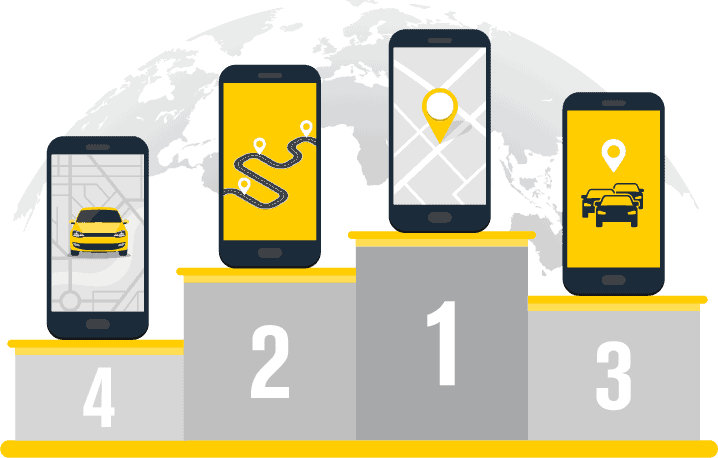Over the past 10 years, rideshare apps have taken the world by storm.
Public transportation can give you an option to get from place to place without owning a car.
But all across the globe, commuters have adopted a new and affordable way to get around their city.
Not all cities have public transportation systems, so rideshare fills the gap.
This service allows you to get from place to place without driving yourself or sharing space with a crowd.
By using apps to connect drivers with passengers, ridesharing has become a popular way to travel.
Whether you’re going to the airport, running an errand, or going out for the night, catching a ride can get you there.
Ridesharing services have given people an innovative alternative to standard taxi services.
You can reserve a ride, pay, and manage your trips all from your mobile device.
There are many different rideshare apps on the market.
You may not know where to start if you’re new to ridesharing or are interested in driving for a rideshare platform.
In this article, we’ll go over what rideshare apps are, how they work, and how much they’ll cost you.
We’ll also cover the most popular rideshare apps and show you how you can sign up and start your rideshare adventure.
Chapter 1
Learn the basics of ridesharing – what it is and how it works.

When discussing the concept of ridesharing, it’s important to understand how it all started.
Ridesharing is a concept that was pioneered by Uber in 2009.
Uber provided customers with a way to easily reserve a ride on their mobile device.
Rideshare refers to a service that connects drivers with passengers that need transportation.
Rideshare apps let you easily reserve a ride in your city with little effort.
Passengers can catch rides without having to ask friends or find an available taxi.
Think of them as a convenient on-demand taxi service that requires only a few taps of your smartphone.
Instead of hiring their own taxi drivers, they gave gig workers an opportunity to make money by driving customers in their own vehicles.
Passengers use smartphone apps to book rides, get updates on the driver’s location, and pay.
Instead of calling a taxi company, the app uses your phone’s location to find the closest driver to pick you up.
You enter your current location and destination.
The driver will have all that information via the app.
The use of apps for ridesharing makes this process easy for both drivers and passengers.
Drivers can turn on their availability at any time and make money in addition to their regular job.
Rideshare refers to a service that connects drivers with passengers that need transportation.
It’s like a taxi service, except the drivers are freelance employees using their personal cars.
Passengers use smartphone apps to book rides, get updates on the driver’s location, and pay.
Instead of calling a taxi company, the app uses your phone’s location to find the closest driver to pick you up.
You enter your current location and destination.
The driver will have all that information via the app.
The use of apps for ridesharing makes this process easy for both drivers and passengers.
Drivers can turn on their availability at any time and make money in addition to their regular job.
Passengers can catch rides without having to ask friends or find an available taxi.
How Ridesharing Started
While Uber undoubtedly led the rideshare boom in recent years, rideshare services didn’t actually begin with the now-international company.
Modern ridesharing — originally known as ride-matching — services already began flocking to the internet in the late 1990s, over 10 years before Uber was even founded.
Many of these early digital services functioned more like carpooling, simply helping drivers earn extra cash on their way home by finding a rider to cover part of the trip.
However, ridesharing has segmented into its own commercialized industry, with many full-time Uber drivers and Lyft drivers waiting for requests throughout the day.
This can, in part, be attributed to the massive popularity of Uber, after the company pivoted from being a smartphone-based black car service to offering its most popular service, UberX — the standard for what ridesharing is today.
For a quick overview of the dominant rise of Uber, check out the video summary below:
Uber proved to be a profitable and flexible gig for many of the company’s drivers, who function as independent contractors, and a convenient, affordable option for riders.
The rest is history.



